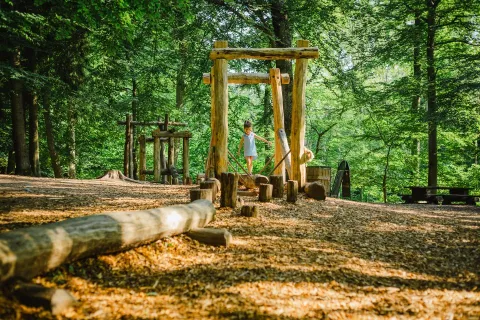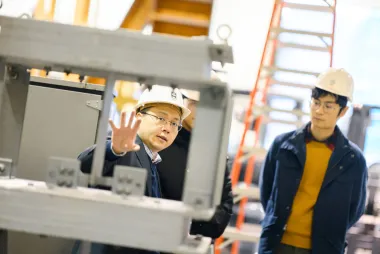Keep outdoor play spaces cool: the best trees, shrubs and plants for shade

Protecting children from scorching sun and intense heat during outdoor play has taken on new urgency due to climate change. Susan Herrington, a professor at UBC's Faculty of Applied Science and landscape architect, offers a simple but powerful solution: planting more trees to create shade and cool the air.
Plants and trees, she says are often overlooked in play space design. Yet they are very effective in providing shade and reducing air temperatures, while creating opportunities for play and contributing to cultural knowledge and ecological health. In the "natural shade lookbook," featured in BC Cancer’s sun safety resources, Herrington and her students recommend top trees, shrubs and vines for British Columbia.
Herrington explains how professionals and homeowners can integrate these suggestions to build vibrant, sun-safe and creative play environments.
How did you choose the recommended shade trees?
With four students at UBC’s School of Architecture and Landscape Architecture (SALA), we analyzed trees across the UBC campus and in Vancouver, evaluating their potential to provide shade. We recommended trees with a shade density between 60 per cent and 90 per cent when in leaf. We prioritized non-invasive, non-toxic plants that are available in nurseries. We also focused on native species, plants that can survive Metro Vancouver’s changing climate, or are fire-resistant.
Our lookbook lists 33 trees, shrubs and vines that met these guidelines—and have other benefits besides. Many also provide cultural enrichment, having been used in construction, art, cooking or medicine, or play a role in cultural stories. For example, many of the plants serve medicinal purposes for Indigenous people. Plants can be used in arts and crafts, offer climbing opportunities, or have unique smells and textures that stimulate curiosity. Plant parts—such as vine-maple samaras that look like dragonflies, the fan-shaped ginkgo leaves, and oak acorns—work well as play props to foster imaginative play and develop social and fine motor skills.
Why is shade so important?
Shade protects against skin cancer and keeps us comfortable. It reduces sun exposure that can lead to sunburn or overheating. Shade makes outdoor places more inviting and enjoyable by offering dappled light—patches of light and shadow created when sunlight passes through the leaves. People tend to find dappled light restorative.
Children are more vulnerable than adults to heat-related illnesses and UV radiation, and hotter summers reduce opportunities for outdoor play which is essential for their development. That’s why adding shade to outdoor play spaces is critical. A 2023 study in BC found that adding shade to playgrounds increased toddlers’ thermal comfort.
Why should we prioritize adding plants and trees to outdoor play spaces?
Plants add so much more value than just shade. They can reduce air temperature by as much as 30 per cent. They absorb carbon dioxide, provide habitat, food and shelter for many species, and help reduce soil erosion.
City trees help combat climate change by cooling outdoor spaces and lowering the heat-island effect. Shading buildings with trees can also reduce cooling costs.
In 25 years of consulting on children's outdoor play spaces globally, I have seen how trees and plants can enrich children’s play. Research shows that playing with natural elements enhances physical activity, emotion regulation, social development and readiness for learning. It is more complex, more diverse and lasts longer than playing on equipment-based playgrounds.
What should we consider when planting trees in our backyards, parks and playgrounds?
Whether you’re planting trees in your yard, or are involved in advocating for or designing a public space, it is ideal to have natural shade covering around 70 per cent of the play area. Complete shade makes it difficult for other plants to grow underneath. Plant trees in groups so that their canopies touch when mature, providing continuous shade and dappled light. Check your plant hardiness zone, as well as your local conditions as temperature, light, wind, salt, fog and moisture can affect plant hardiness.



